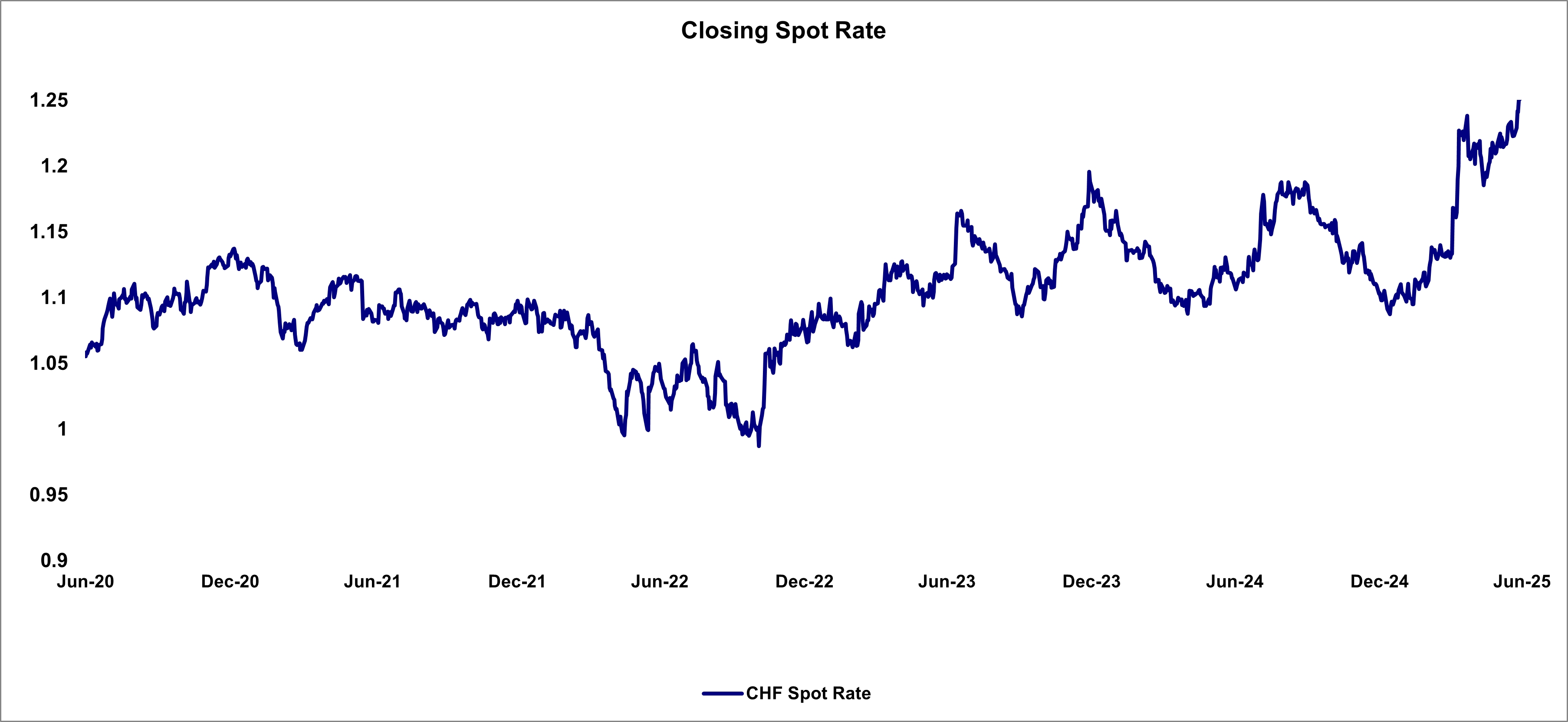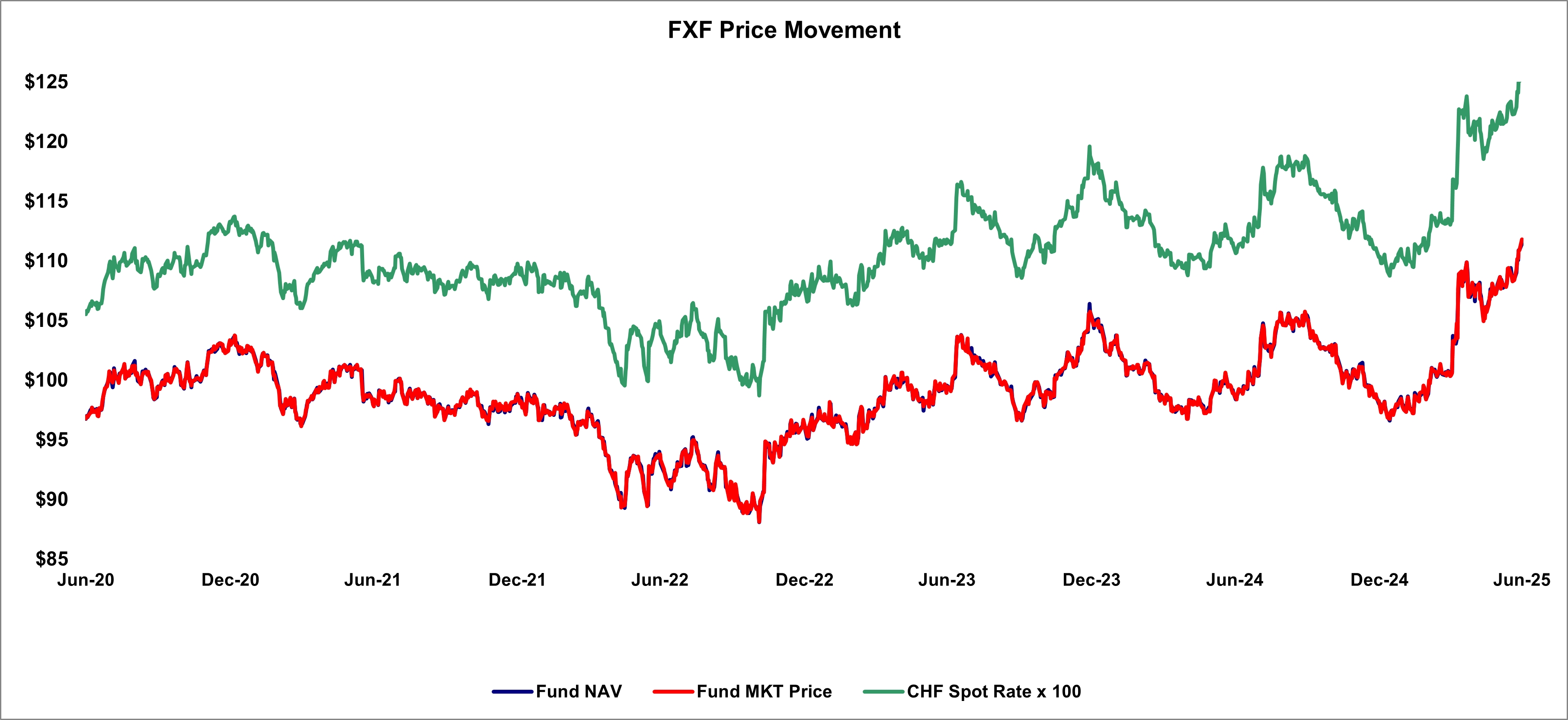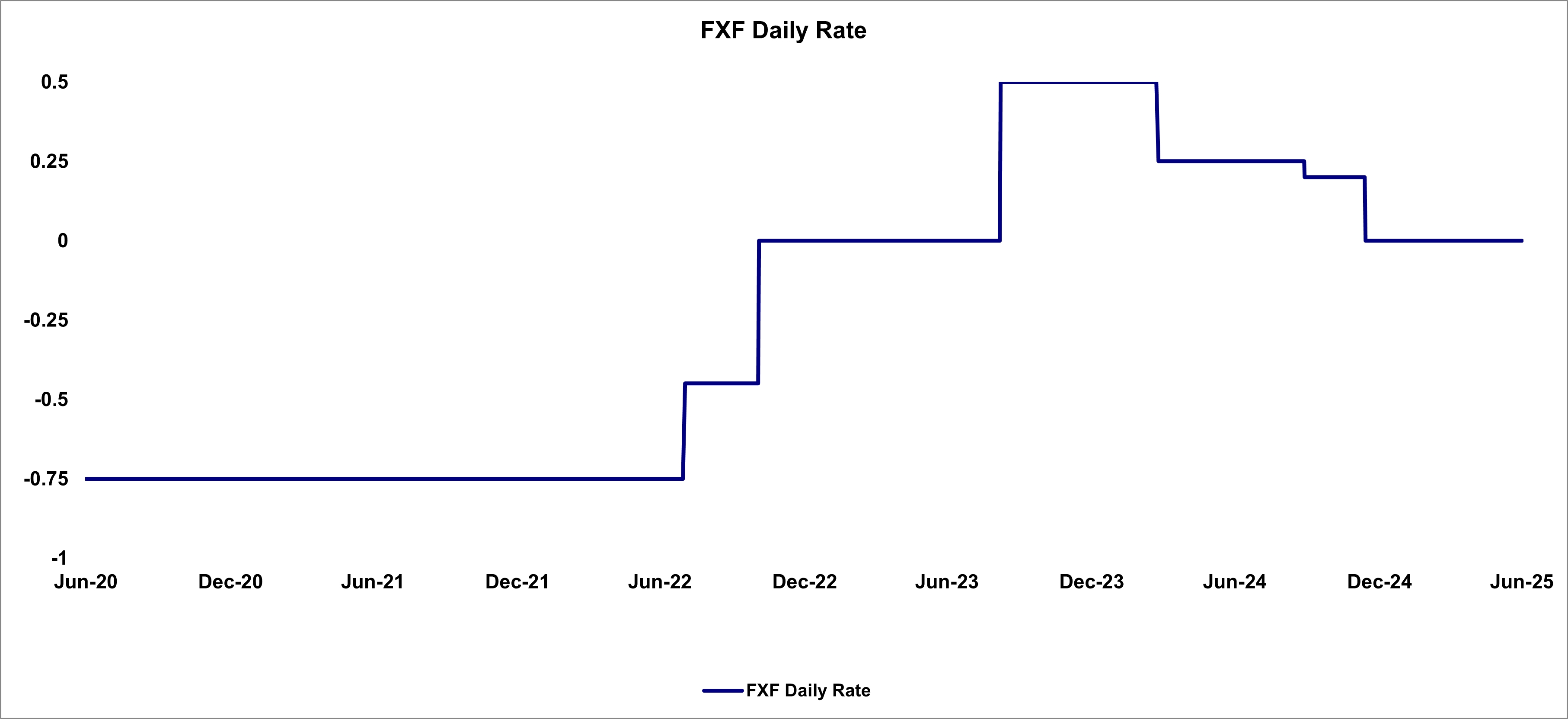Results of Operations
During the three and six months ended June 30, 2025 and 2024, the Trust's net comprehensive income (loss) was, in part, impacted by market volatility resulting from global tariff gyrations and mounting US economic concerns for 2025, and expectations around the Federal Reserve (the “Fed”) easing and heightened geopolitical concerns for 2024, which are considered to be unusual or infrequent events. Although the full and direct impact of global tariffs, US economic concerns, Fed easing expectations and rising geopolitical tensions, on the Trust's net comprehensive income (loss) during the three and six months ended June 30, 2025 and 2024, cannot be known, it is believed that they have each independently impacted the Closing Spot Rate, the interest rate paid by the Depository, and the global economy and markets generally, including the number of Shares created and redeemed by the Trust.
The Swiss Franc (CHF/USD) continued to post strong gains throughout the second quarter of 2025, largely due to its safe-haven appeal. As sentiment toward American assets worsened, investors increasingly turned to the Swiss franc as a more stable alternative. Despite inflation in Switzerland turning negative in May, the currency still appreciated, driven by global risk aversion and a broadly weaker U.S. dollar.
The Swiss Franc (CHF/USD) posted a gain in the second quarter of 2024. While the pair was initially pressured by US dollar
gains on delayed Fed rate cut expectations, CHF saw strong gains mid-quarter. The pair even managed to move higher despite positive
moves in the US dollar as Swiss inflation came in above estimates causing speculation that the Swiss National Bank (SNB) would
need to put a pause on their easing plans.
The Swiss Franc (CHF/USD) has delivered strong gains year-to-date through the second quarter of 2025, supported by ongoing U.S. dollar weakness and steady demand for safe-haven assets. In the first quarter, the pair benefited from rising concerns about a U.S. recession and stagflation, which triggered a sharp selloff in risk assets and pushed investors toward more stable currencies like the Swiss Franc. That momentum carried into the second quarter, as confidence in U.S. markets continued to decline. Despite Swiss inflation turning negative in May, the pair remained resilient, with investors favoring its stability amid heightened global uncertainty.
The Swiss Franc (CHF/USD) posted a loss in the first half of 2024, with the pair down nearly 7%. While some of this was
driven by gains in the US dollar – the Fed’s higher-for-longer rhetoric and stickier-than-expected US inflation pushed out expectations
for rate cuts, supporting US treasury yields – the pair was heavily pressured after the Swiss National Bank (SNB) became the first
major central bank to start cutting its interest rates in March. Lower interest rates reduce the appeal of the country’s currency.
Additionally, the interest rate paid by the Depository has generally trended downward over the past year with the current interest rate of 0.00%, as set forth in the FXF Rate Chart above. As long as the Sponsor’s fee and the interest expense on currency deposits, if any, exceed interest income, the Trust will incur a net comprehensive loss.
Item 3. Quantitative and Qualitative Disclosures About Market Risk.
Except as described above with respect to fluctuations in the Swiss Franc/USD exchange rate and changes in the nominal annual interest rate paid by the Depository on Swiss Francs held by the Trust, the Trust is not subject to market risk. The Trust does not hold securities and does not invest in derivative instruments.
Item 4. Controls and Procedures.
Under the supervision and with the participation of the management of the Sponsor, including Brian Hartigan, its Principal Executive Officer, and Kelli Gallegos, its Principal Financial and Accounting Officer, Investment Pools, the Trust carried out an evaluation of the effectiveness of the design and operation of its disclosure controls and procedures (as defined in Rules 13a-15(e) or 15d-15(e) of the Securities Exchange Act of 1934, as amended (the “Exchange Act”)) as of the end of the period covered by this Quarterly Report, and, based upon that evaluation, Brian Hartigan, the Principal Executive Officer of the Sponsor, and Kelli Gallegos, the Principal Financial and Accounting Officer, Investment Pools, of the Sponsor, concluded that the Trust's disclosure controls and procedures were effective to provide reasonable assurance that information the Trust is required to disclose in the reports that it files or submits with the Securities and Exchange Commission (the “SEC”) under the Exchange Act is recorded, processed, summarized and reported, within the time periods specified in the SEC's rules and forms, and to provide reasonable assurance that information required to be disclosed by the Trust in the reports that it files or submits under the Exchange Act is accumulated and communicated to management of the Sponsor, including its Principal Executive Officer and Principal Financial Officer, as appropriate to allow timely decisions regarding required disclosure.
Changes in Internal Control Over Financial Reporting


